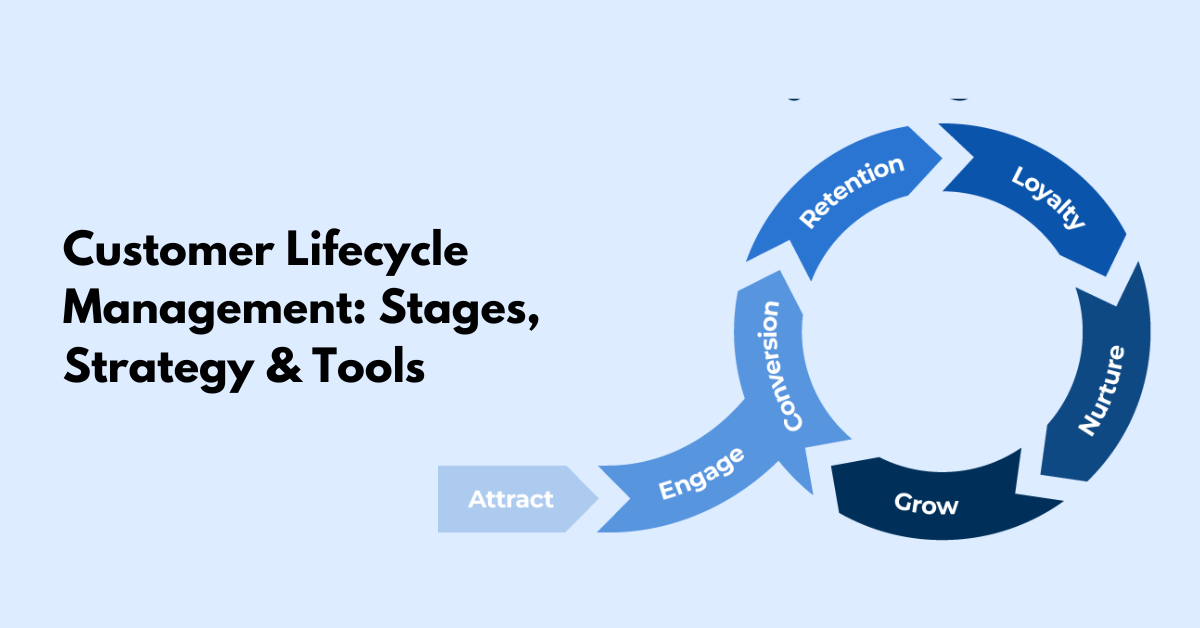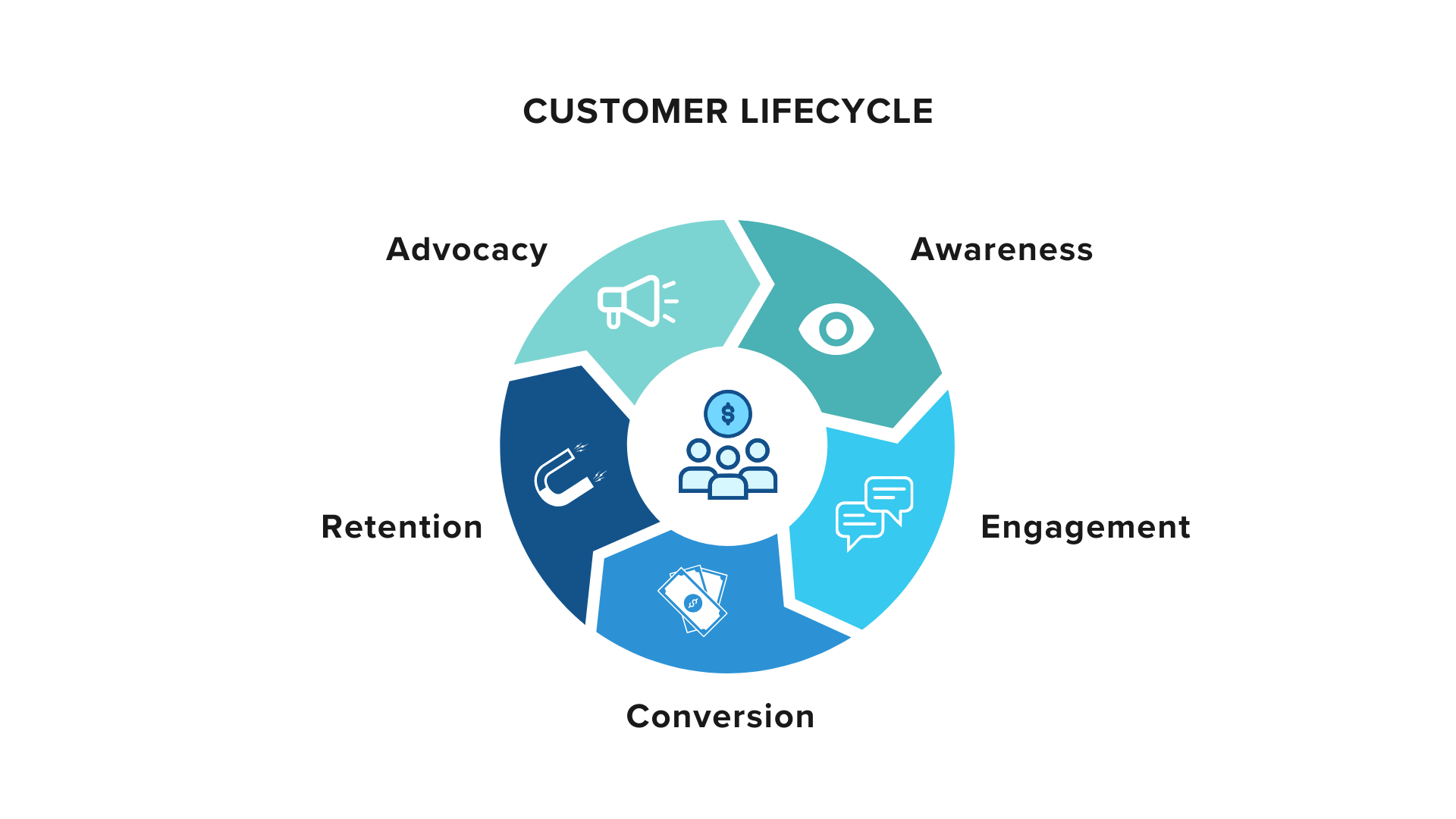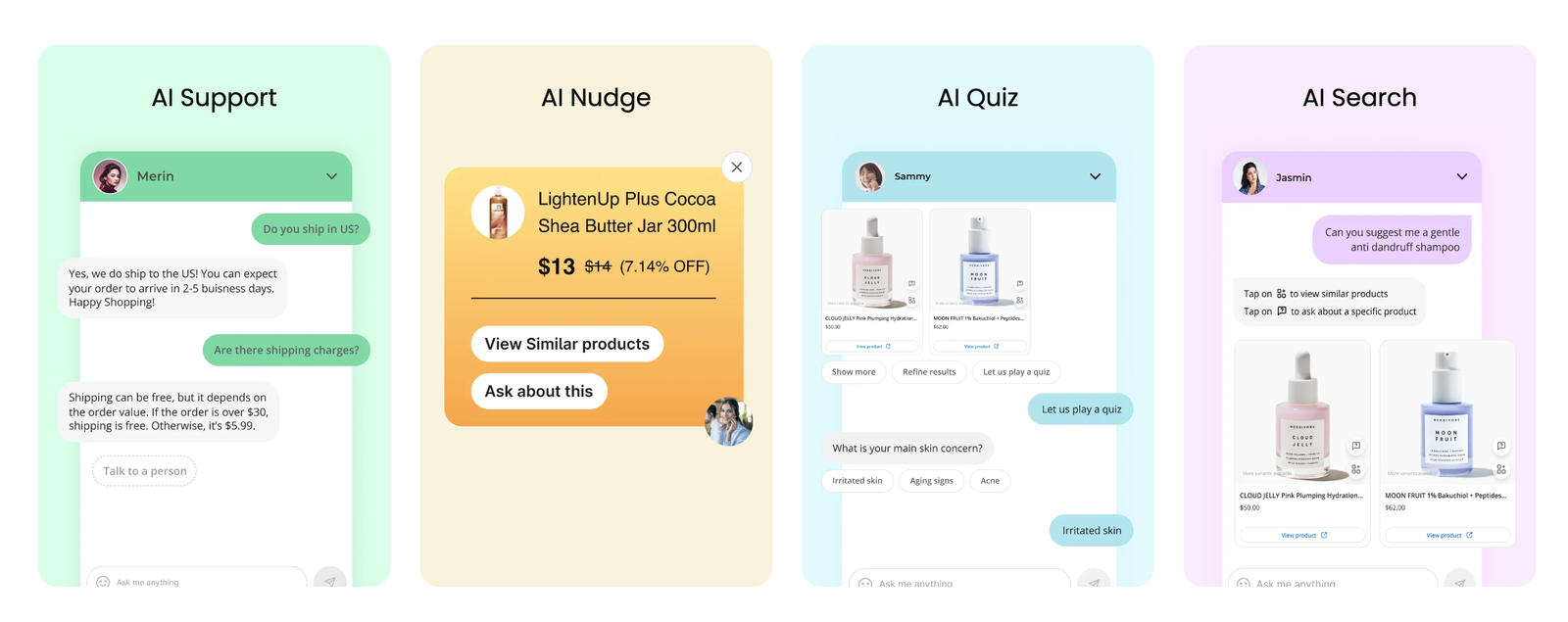Customer Lifecycle Management: Stages, Strategy & Tools (2024)

Customer Lifecycle Management (CLM) is essential for nurturing and maintaining customer relationships effectively. It involves understanding the various stages a customer goes through with a business, from initial awareness to post-purchase loyalty. CLM strategies, backed by the right tools, help businesses optimize interactions at every stage to enhance customer satisfaction and retention. Studies indicate that a well-managed customer lifecycle can increase customer retention rates by up to 5%, which in turn can boost profits by 25% to 95%.
This blog will delve into the stages, strategies, and tools essential for effective CLM.
What is Customer Lifecycle Management?

Customer Lifecycle Management (CLM) refers to the process of managing the entire journey a customer undertakes with a business, from initial contact to long-term loyalty. The aim is to understand and enhance each interaction to maximize customer satisfaction and retention. CLM involves identifying significant touchpoints where businesses can make impactful connections, such as the initial purchase, follow-up support, and ongoing engagement strategies to encourage repeat business. By effectively managing these interactions, businesses can improve customer loyalty, increase the likelihood of repeat purchases, and ultimately drive higher revenue.
Effective CLM not only helps in retaining customers but also in transforming them into advocates for the brand.
Why is Customer Lifecycle Management Important?

Customer Lifecycle Management (CLM) is vital for any business aiming to foster lasting relationships with its customers. Here’s why it is so crucial:
- Enhanced Customer Experience: CLM helps businesses understand and anticipate customer needs and preferences at various stages. This understanding enables companies to deliver tailored experiences, increasing customer satisfaction and loyalty.
- Increased Customer Retention: By effectively managing the client lifecycle, businesses can nurture their relationships with customers, encouraging repeat business and long-term loyalty. Retaining existing customers is often more cost-effective than acquiring new ones.
- Improved Revenue Growth: Through personalized marketing and targeted promotions based on the specific lifecycle stage of each customer, businesses can increase their chances of upselling and cross-selling. This targeted approach helps maximize customer value and boost revenue.
- Better Customer Insights: CLM provides valuable insights into customer behaviors and trends. These insights allow businesses to refine their strategies and operations, ensuring they meet evolving customer expectations.
- Strategic Resource Allocation: Understanding the customer journey allows businesses to allocate their resources more effectively, focusing efforts on high-impact interactions that are likely to drive loyalty and revenue.
Customer Lifecycle Management Tools

Customer lifecycle management (CLM) tools are crucial for businesses aiming to enhance customer relationships and maximize retention. Here are some key types of tools used in CLM and their benefits:
- CRM Systems (Customer Relationship Management): These systems collect and manage customer data across different points of interaction. They enable businesses to track customer behaviors, preferences, and history, helping to personalize communication and improve customer service.
- Marketing Automation PlatformsThe customer: These customer lifecycle management platforms automate repetitive tasks in marketing campaigns and customer outreach. They can segment audiences, schedule emails, and manage social media posts, which helps in delivering targeted messages at optimal times.
- Analytics and Reporting Tools: These provide insights into customer behavior, campaign performance, and overall business metrics. With customer lifecycle analysis, businesses can make informed decisions on how to improve their strategies and better meet customer needs.
- Customer Feedback Tools: Tools like surveys, polls, and feedback forms help businesses gather valuable insights directly from customers. This information can guide product development, customer service improvements, and overall strategy.
- Loyalty and Rewards Programs: Designed to enhance customer retention, this customer lifecycle management software incentivizes repeat business by rewarding customers for their loyalty. This can include points, discounts, or exclusive offers.
Customer Lifecycle Management Strategy
The customer lifecycle management (CLM) strategy focuses on managing the various phases through which a customer passes during their relationship with a company. Implementing an effective CLM strategy requires thoughtful planning and execution. Here’s how you can structure your approach:
- Awareness Stage: Ensure that potential customers learn about your brand through various channels such as social media, advertisements, or word of mouth. The goal is to make a memorable first impression that encourages further interaction.
- Engagement Stage: Engage these potential customers by providing valuable content, responsive customer service, and interactive platforms. This stage aims to build interest and trust, turning an audience into prospective buyers.
- Purchase Stage: Streamline the purchasing process to make it as smooth as possible. Offer clear information, multiple payment options, and strong support to facilitate decision-making and convert prospects into customers.
- Post-Purchase Support: After a purchase, continue to engage customers with excellent service, including timely follow-ups, thank you messages, and handling any issues swiftly. This enhances satisfaction and builds loyalty.
- Retention: Encourage repeat business by understanding and anticipating customer needs, offering personalized services or products, and maintaining regular communication through newsletters, offers, and updates.
- Advocacy: Satisfied customers can be encouraged to become brand advocates. Motivate them to share their positive experiences through reviews, testimonials, or referrals. Rewarding such behaviors can further strengthen the relationship.
5 Stages of the Customer Lifecycle in Organizations
The customer lifecycle in organizations can be broken down into five distinct stages. Each stage represents a different part of the customer's journey with a company, from the first interaction to the development of a loyal relationship. Here’s an overview of each stage:
- Awareness
This is the initial stage where potential customers first learn about a company or its products, often through advertising, social media, or word of mouth. The goal for businesses here is to make a strong first impression.
- Consideration
At this point, potential customers are aware of the company and begin evaluating its offerings against competitors. They may read reviews, seek more detailed information, and compare features and prices. Effective communication and targeted content are crucial in this stage to sway their decision.
- Purchase
The transaction phase is where a customer decides to buy a product or service. Ensuring a smooth and easy purchasing process can significantly affect the decision to complete the sale and can impact future loyalty.
- Retention
After the purchase, the focus shifts to keeping the customer happy with their decision. This can involve customer support, follow-up services, and making customers feel valued. Successful retention strategies often lead to repeat purchases.
- Loyalty
The final stage is where satisfied customers not only make repeat purchases but also become advocates for the brand, often recommending products to others and providing positive reviews. Companies might foster loyalty through rewards programs, exclusive offers, and regular engagement.
How To Manage the Customer Lifecycle?
Managing the customer lifecycle effectively involves several key strategies that ensure customers remain engaged and satisfied throughout their relationship with your business. Here’s how to manage the customer lifecycle:
- Understand the Stages: Break down the customer journey into clear stages: awareness, consideration, purchase, retention, and advocacy. Understanding these stages helps in crafting appropriate strategies for each phase.
- Tailored Communication: Communicate with customers based on the stage they are in. Initial communications should educate and inform, while later stages should focus on maintaining and deepening the relationship.
- Use Data Effectively: Collect and analyze customer data to understand behaviors and preferences. This information allows for more personalized and timely interactions that resonate with each customer.
- Engage Proactively: Don’t wait for customers to reach out with issues. Proactively engage them with helpful information, support, and product recommendations that could enhance their experience.
- Implement Feedback Loops: Regularly collect and act on customer feedback. This not only improves the product or service but also shows customers that their opinions are valued, enhancing loyalty.
- Leverage Technology: Utilize CRM lifecycle management and other tools to streamline the management process. These tools can automate communications, track customer interactions, and provide actionable insights.
- Foster Loyalty: Create loyalty programs or offer exclusive benefits to long-term customers. These initiatives should reward customers for their loyalty, encouraging continued business and referrals.
- Monitor and Adapt: Continuously monitor the effectiveness of your lifecycle management strategies and make adjustments as needed. Market conditions and customer preferences can change, so staying adaptable is crucial.
Example of the customer lifecycle management solution

Keeping customers involved throughout their buying process is challenging. It requires multiple actions and precise interactions. Here's a practical example of how businesses can utilize support software to enhance customer experiences and increase retention.
Dedication to supporting customers through every stage with an AI shopping assistant

Enhance customer engagement and empower your team to deliver superior shopping experiences by using Manifest AI to develop targeted support strategies for each stage of the customer lifecycle. Manifest AI enables you to analyze shopper behavior and make informed decisions, increasing both profitability and customer satisfaction.
Discover how Manifest AI supports e-commerce teams in delivering effective customer service through various channels and equips shoppers with self-service tools for quicker issue resolution.
Conclusion
Effectively managing the customer lifecycle is crucial for building lasting relationships and driving sustained business growth. By understanding the different stages—from initial awareness to loyal advocacy—and implementing targeted strategies at each phase, businesses can enhance customer satisfaction and retention.
The right tools, such as CRM systems, can facilitate this process by providing valuable insights and automating routine tasks. Ultimately, a well-executed customer lifecycle management strategy not only boosts profitability but also strengthens the overall health of a business by keeping customers engaged and committed.

.png)
